How many architects does it take to save the world? Well you can start by inviting 397 from 38 countries, hand pick the best 25 and let them loose on a 14 year project. That’s what the Tenerife government did, and that’s why the ITER renewable energy site in Granadilla is now the world leader in self sufficient, CO2 free homes.
The strident wind turbines may amuse and amaze visitors using the TF1 motorway or landing at Reina Sofia airport but just below their blades a revolution has been taking shape. If that sounds a little too worthy for comfort, a sea of world scientists, architects, dignitaries and media swarmed in and around the 25 houses and found that self sufficiency can be stylish as well as practical.
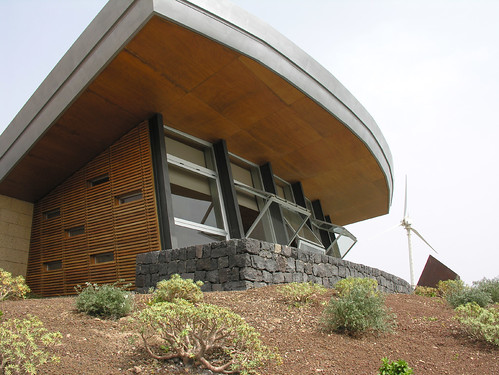
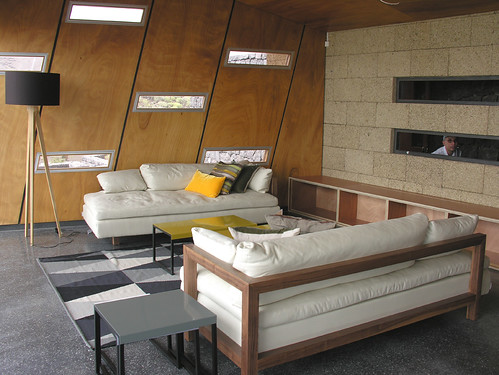
Let’s peek through the keyhole of La Geoda (above). Peering over the arid earth bank it has a hint of bunker about it but once inside I could see that even though it was set low in the ground to utilise natures warmth and insulation, the light flooded in. Positioning of these buildings is vital and just one of the many considerations at work. The light roomy feel inside and split level design all added to the modern clean finish.
All of the houses are very different but share the same environmental concern, photovoltaic systems built into the roofs make sure they use the clear sunny skies that Tenerife is famous for. Any excess electricity produced is shared out to serve all the homes, the water supply works in the same way. A desalination plant draws and purifies sea water from the Atlantic that laps at the shore around this rugged stretch of coast.
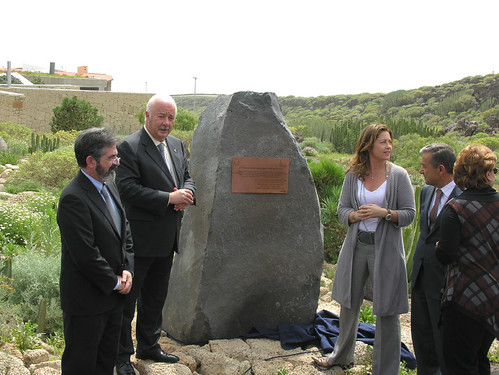
Ricardo Melchior, Tenerife Cabildo President has driven this project from the start, it’s a subject close to his heart. The President studied engineering in Spain and Germany and has an honorary doctorate of science from Ireland University and the National order of merit from the French government. Other notable visitors to the inauguration included Dr Wolfgang Palz, Chairman of the World Council for Renewable Energy, and Princess Alexia (above) of Greece with her architect husband Carlos Morales.
The 400,000 square metre site of ITER (Institute of Technology and Renewable Energy) was chosen to make full use of nature, it is often buffeted by winds and waves. For the inauguration the dusty cloak of a calima blown in from Africa, partly masked the nearby industrial estate but the long promised Granadilla port will cast its own controversial shadow in future years.
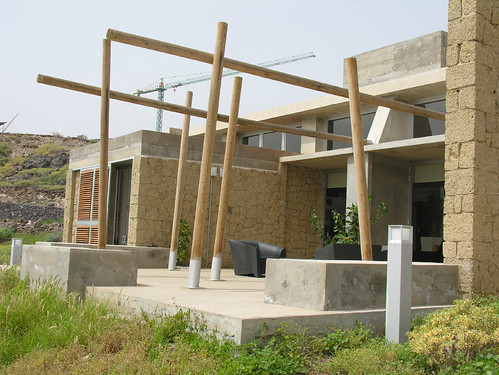
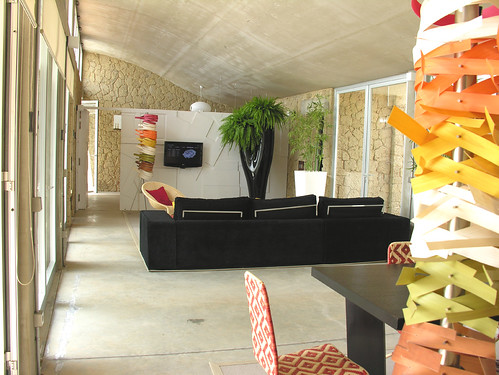
Back in the village El Bernegal (above) was another house to offer a frugal outside before bursting open inside with large practical and attractive rooms. El Cangrejo has a much more futuristic façade, the solar panels loud, proud and plentiful. Many of the houses have small patios decorated with flowers and plants to break up the sometimes hard lines. The next stage of this ongoing project is for scientists, experts and interested parties to live in them to interact and gauge their performance. Feedback is being collected all the time via inside and outside temperature probes, CO2 and dust sensors, and air flow and humidity readers. ITER has always shared its data, their website has full technical reports and results from all its projects, for experts and keen enthusiasts to delve into.

COME AND BROWSE
For one week from Tuesday 23 March, ITER is inviting the public to come and tour the bioclimatic village. To book a place on a tour call Elsa on 922391000 ext 136. ITER also does regular tours of the rest of its site.
ITER, Follow sign to Granadilla Industrial Estate from the TF1 motorway. Website www.iter.es
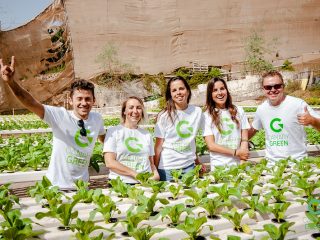
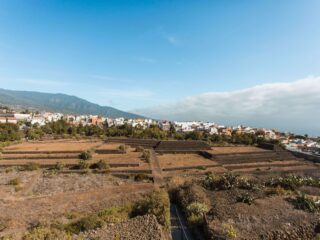
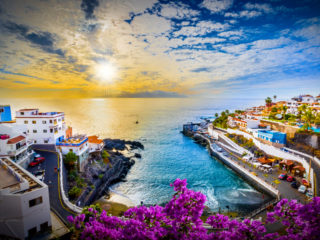
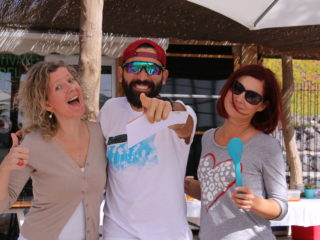

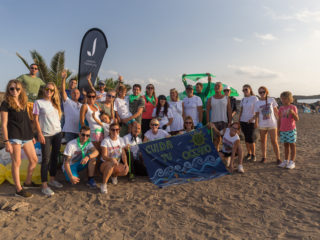
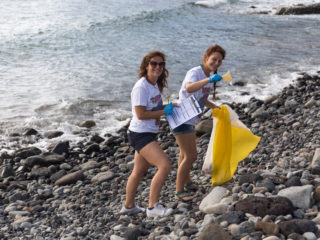
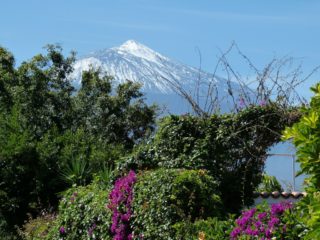
Comments are closed.